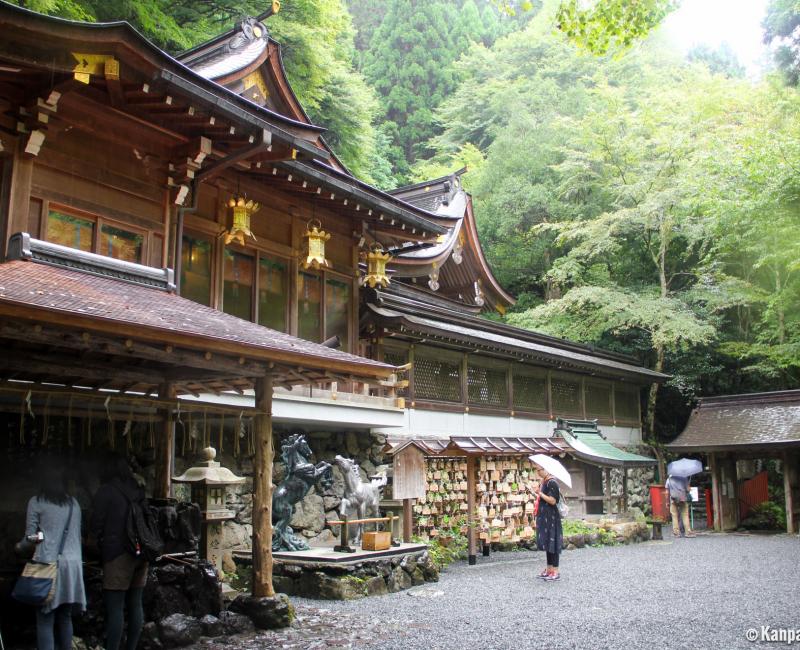Kibune
Northern Kyoto’s Water Valley
Kibune is a Japanese village located in a wooded valley in the Kansai region, in the mountains of northern Kyoto, made up of only one main street that it runs alongside a river. Tourists come during all seasons to enjoy the serenity of Kifune Shrine, to taste a traditional meal on the riverbank, and to enjoy the local onsen’s benefits.
Easily reachable by train 🚅 from Kyoto’s Imperial Palace via Demachiyanagi Station, Kibune offers a green, spiritual escape from the city. It is a charming place far from the noisy streets of the former imperial city. On the steep slopes of a mountain, framed by a magnificent and luxurious forest, only one simple road hosts the touristy activities of the place.
Among the present establishments dedicated to relaxation, we note the village’s unique ryokan, called Ugenta. Renowned for its refined service, it is loved by visitors seeking calm and intimacy at a relatively high price.
We can also find several typical restaurants located along Kibune River. In the summertime, some have the habit of setting out wood terraces above the water. Clients can then lunch or dine on the improvised terraces and enjoy the fresh and relaxing atmosphere. We call this process kawadoko. Note that most of the restaurants serve kaiseki meals, the traditional form of Japanese dinner, made of small, consecutive seasonal dishes. However, the prices, which range between ¥3,000 (~US$21.01) and ¥20,000 (~US$140.04), demand visitors prepare their budgets accordingly.

Kifune Shrine
Historical center of the city, the pavilions of Kibune-jinja proudly stand out to visitors who succeed in climbing its numerous rock stairs. Dedicated to the deity of water and rain ☔️ and the protector of the harvests, the construction date of this very old shrine is unknown, but it is a legendary place where a kami (goddess) arrived after leaving Osaka Bay on a yellow-colored boat (貴 ki means yellow and 船 fune means boat).
On the northern end of the valley, the original building of the Okunomiya complex is located next to a large stone covered in moss, indicating the exact site where the famous deity’s boat is said to be buried.
The tradition of the place wants that one chooses a particular omikuji (small piece of paper to know its destiny), because the message is revealed only once it dipped in the water.

Hiking to Kurama
For nature and hiking lovers, a pedestrian trail links Kibune to Kurama, a neighboring village of the same type. The cultural interest of the promenade is the chance to discover the huge, beautiful temple Kurama-dera.
The trail starts not far from the Kibune bus station, on the other side of the river, and can be reached by taking a small red bridge. We arrive at the west gate, Nishi-mon, pointing out the entrance to the temple. The entrance fee is ¥300 (~US$2.10). From there, a quite abrupt climb starts toward a centuries-old forest of huge cedar trees.
After about one hour of hiking on the mountain—with hiking shoes if possible—visitors come across several sacred shrines and, notably, the famous Okunoin Mado-den, hidden here and there around the trail and ornamented with big, beautiful roots. The walk ends by the main hall of the temple, overlooking the surrounding mountains, then continues to Yuki Shrine by going down to the center of Kurama.
A visit to Kibune is advised in summer to escape from the stifling heat of Kyoto and to enjoy the outside tables. A visit in the fall to appreciate the magnificent show offered by the red maple trees known as momiji 🍁 is also recommended. During these busy periods, it is wise to arrive early in the morning. We recommend as well to go in winter, when snow covers the shrine’s buildings with delicacy, giving them an additional mystical dimension.

